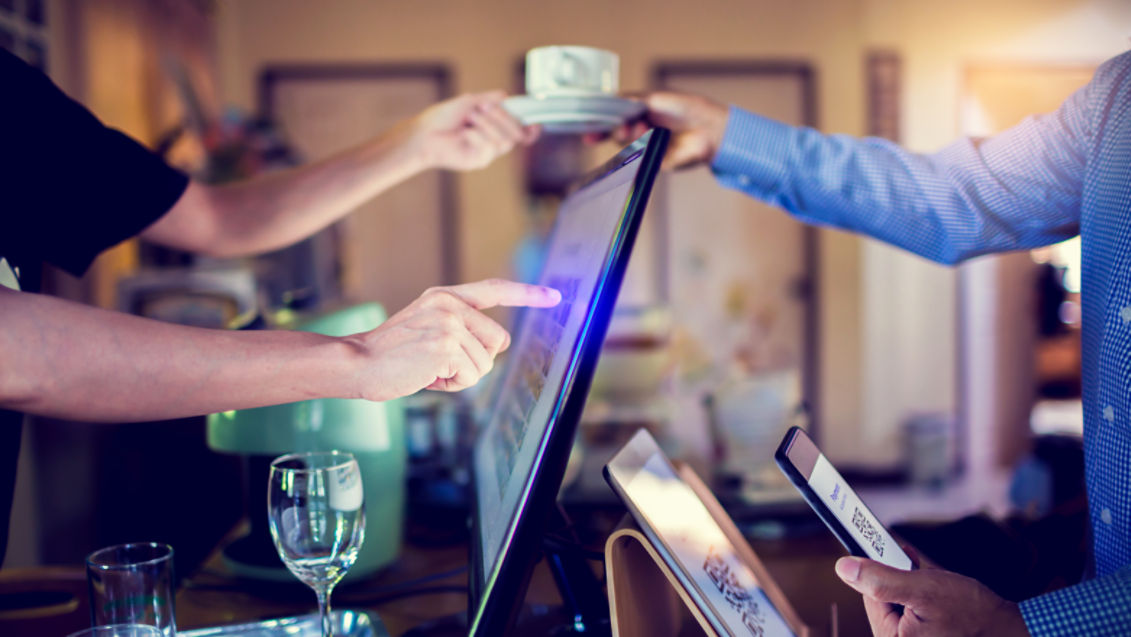Keep up with customer demands by expanding your digital services

Featured resources
Create engaging, convenient shopping experiences at every touchpoint
Innovative shopping experiences begin with your network. As a result, 88% of C-suite retailers are prioritizing investments in digital acceleration.1 Our tailored technology solutions provide high-performance connections to your stores, data centers and the cloud—so you can adapt to industry changes, leverage valuable customer data and create engaging digital experiences.
FLEXIBLE
Adapt to ever-evolving shopping behaviors
Customers shop how, when and where they want to, with 21% of retail sales expected to be online by 2025.2 Expand your digital services and provide elevated shopping experiences now and in the future with our scalable infrastructure solutions. We’ll help you provide highly personalized customer experiences across all touchpoints, whether it’s through the web, mobile apps, on the phone or in your store.
DATA DRIVEN
Gain insights with integrated data analysis tools
Customer data can illuminate important trends and insights needed for your business’s success. That's why last year, nearly half of executives said they plan to use better analytics to improve decision-making. Our cloud and connectivity solutions make it easier to gather, manage, secure and analyze customer data, so you can understand and respond to their needs faster.
RELIABLE
Stay up and running
Because 44% of U.S. shoppers feel more comfortable shopping online, any network disruption can cost you time, money and customer satisfaction.3 Protect your network and customer data with a proactive solution that minimizes vulnerability, ensures you always have secure access to business-critical platforms and includes 24/7/365 support.
Discover the latest technology trends and topics in the digital era of retail
See how to accelerate network modernization, stay ahead of shopping trends, and stay up and running to meet the retail technology demands of today's customers.
Dig deeper with helpful resources and expert insights
Improve customer service with solutions designed for retail businesses
Simplify the way you collaborate with seamless connectivity. Get cloud-based voice, video and messaging services integrated onto a single platform and delivered over any internet connection. Meet anywhere, anytime, without additional hardware to maintain.
Trust Spectrum Business for enterprise to be an extension of your IT department. Through our managed services, we partner with you to design, implement and manage services 24/7/365 and provide ongoing U.S.-based support whenever you need us.
Provide your customers and employees with connections and speeds up to 100 Gbps. With a dedicated and secure connection, you can extend your network across town, across the country and into the cloud.
Empower employees to connect and provide excellent customer service with Spectrum Business for enterprise voice and collaboration services. These solutions maximize employee productivity and improve communication with customers.
1Deloitte, 2021 Retail Industry Outlook: “The New Rules of Retail.”
2Forbes, “Five E-Commerce Trends That Will Change Retail In 2021,” Jan 2021.
3“The State of the US Shopper,” Forrester Analytics Consumer Technographics® Retail Recontact Survey, Sep 2021.
4100% uptime SLA guarantee applies only to Dedicated Fiber Internet, Secure Dedicated Fiber Internet, Ethernet Services, Cloud Connect and Enterprise Trunking.



